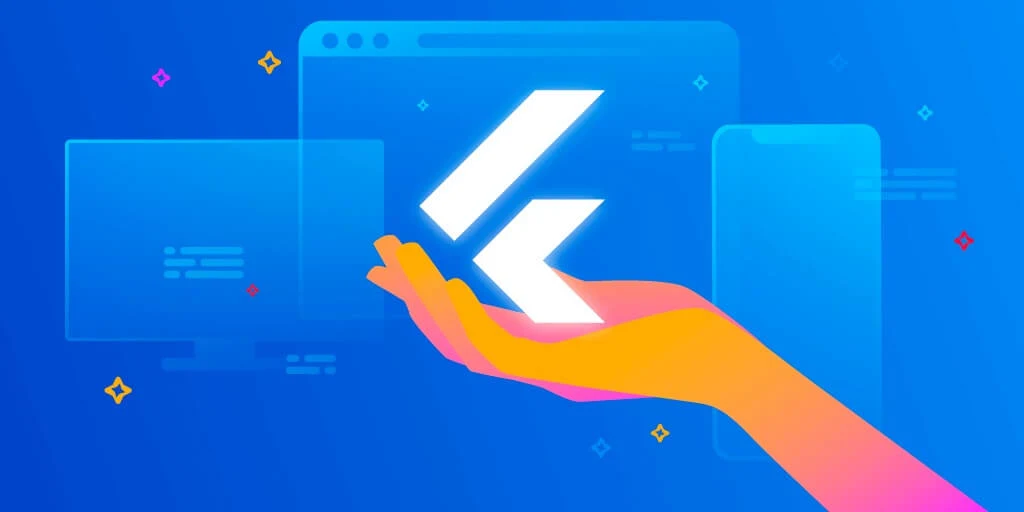Companies seeking an edge in mobile app development are turning increasingly towards the Google Flutter framework to develop powerful yet versatile apps for multiple platforms with native-like experiences that stand the test of time.
Flutter’s popularity stems from its efficient development process that simplifies development time while offering cross-platform apps a native-like user experience – an approach that has resulted in myriad benefits to businesses looking for competitive advantage online.
Flutter app development presents businesses with many distinct cost-cutting and efficiency benefits. Utilizing its single codebase approach, developers can write once and deploy across both Android and iOS platforms – reducing development time and costs and guaranteeing consistent user experiences across devices.
Flutter apps stand out with their impressive performance, allowing businesses to develop smooth and high-performing applications that meet modern users’ expectations. Their expressive widgets enable easy brand integration, resulting in visually attractive applications.
The Transformative Benefits of Flutter App Development Services
Flutter app development services for businesses offer many advantages that make this framework stand out from its peers in mobile app development.
Cross-Platform Compatibility
One of Flutter’s key selling points is its cross-platform app development capabilities. Businesses no longer need to choose between developing applications for Android and iOS separately – instead, Flutter allows developers to use one codebase that works equally well on both platforms.
It speeds up development and significantly decreases costs associated with maintaining multiple codebases. Flutter app development services are pivotal in drawing attention to the unique expertise developers offer businesses seeking cross-platform compatibility solutions.
Quicker Development Cycle
Flutter’s hot reload feature, which allows developers to see any code changes without restarting the application, significantly reduces development times.
Real-time feedback loops foster collaboration among developers, designers, and stakeholders, resulting in faster iterations and app development timeframes. Flutter’s rapid development cycle facilitates businesses’ quick app release schedule to address market demands more swiftly.
Cost-Effectiveness
Traditional app development often necessitates two separate teams dedicated to Android and iOS app creation, leading to higher development expenses and labor costs. Flutter’s cross-platform nature eliminates this requirement for two teams while decreasing labor expenses, thereby lowering development expenses.
Flutter’s code reuse capability reduces resources required for maintenance and updates, leading to long-term cost savings for businesses. Furthermore, its cost-effectiveness makes Flutter app development services attractive options for organizations operating with budget restrictions.
Attractive User Interfaces
Flutter is a powerful tool for creating attractive, standard user interfaces compatible across platforms. With its range of customizable widgets that facilitate smooth development workflow, Flutter makes creating beautiful interfaces an accessible task for developers.
Businesses can create brand consistency and provide an immersive user experience through Flutter app development services, leading to increased engagement and satisfaction from their target users. Flutter’s ability to develop beautiful user interfaces makes it an attractive solution for companies prioritizing aesthetics and usability.
High Performance
Flutter’s impressive performance can be attributed to its use of the Dart programming language and compiled codebase, which is directly executed by native machine code on target platforms for faster execution times and increased app performance.
Flutter offers businesses tremendous efficiency, particularly those requiring high-performance applications like gaming or multimedia streaming. Flutter application development services represent tailored applications specifically tailored for business needs.
Seamless Integration
Business applications often entail adding new features or third-party services seamlessly into their apps. Flutter makes this easier by offering native performance for integrated components.
Flutter offers businesses an efficient integration solution for payment gateways, social media platforms, and APIs – including payment gateways, social media, and API integrations – so their applications meet customers’ diverse requirements without impacting performance or user experience.
Businesses can enhance functionality without impacting performance or user experience in completing these various customer demands.
Engaged Community
Flutter’s success and sustainability depend heavily upon its community; hence, its enormous and active developer community contributes regularly towards its advancement and improvement.
Businesses adopting Flutter can draw upon an abundant pool of knowledge, resources, and third-party packages available within their community to accelerate development and address challenges more quickly and effectively. Furthermore, its support strengthens reliability for long-term solutions within businesses that choose Flutter as their framework.
Drawbacks of Using Flutter
Below are a few critical disadvantages associated with Flutter:
Limited Native Features
Flutter provides abundant widgets and a practical framework for building user interfaces, yet may lack some native features and APIs available through platform-specific languages like Swift for iOS or Kotlin on Android. This may need help accessing device-specific functionalities or integrating platform services.
Large App Size
One of the key drawbacks to Flutter’s use as an application development language is its relatively larger app size than native applications. Flutter apps contain an executable version of Dart’s runtime and framework, which may lead to larger APK or IPA files on mobile users with limited storage and slower internet connections.
This may pose problems when installing apps directly through PlayStore or Apple iTunes, especially given limited storage and slower internet speeds.
Performance Concerns
While Flutter provides adequate performance for most applications, its native counterpart may achieve superior optimization. Bottlenecks may occur, particularly with graphics-intensive apps, due to Flutter relying on its rendering engine instead of native components – potentially disrupting the smoothness and responsiveness of the operation of an app.
Learning Curve for Dart
Flutter utilizes Dart as its programming language, which may not be as widely adopted or familiar to developers as languages like JavaScript, Swift, or Kotlin. Adopting new languages presents challenges – particularly if teams already possess expertise with another programming language such as Java. Learning curves may slow development initially while decreasing overall efficiency during this process.
Flutter Lacks Third-Party Libraries
While Flutter does offer an expanding ecosystem of packages and plugins, its selection still does not match those found on native platforms such as Android. As a result, developers may need to build certain functionalities from scratch or adapt existing packages tailored explicitly for Flutter applications – resulting in extra development time and cost.
Platform-Specific Design Challenges
Flutter strives to deliver a uniform user interface across platforms – known as the “write once, run anywhere” principle – however, creating the native-like look and feel on iOS and Android may take more work, design details, platform-specific guidelines, and behavior expectations all present challenges when trying to craft an optimal experience across varied devices.
Limited Access to Platform-Specific APIs
Flutter abstracts many platform-specific APIs into its single API layer for cross-platform development purposes, making it much more straightforward for developers but potentially restricting them from accessing certain device features or APIs that do not appear through Flutter’s abstraction layers. This may prove troublesome for applications that rely heavily on platform-specific functionalities.
Community and Ecosystem Maturity
Although Flutter has seen tremendous popularity in its short lifespan, its ecosystem may still not be fully developed as is seen with more established frameworks, potentially leaving developers short on resources, tutorials, and community support to tackle specific problems that arise with its rapid evolution; additionally breaking changes between versions could necessitate frequent adaptation to adapt their codebase accordingly.
Conclusion
Engaging in Flutter app development offers businesses numerous benefits that make their mobile solution efficient and robust.
Flutter’s cross-platform nature ensures an economical and time-efficient development process, enabling companies to target a wider audience with just one codebase – this reduces expenses and shortens time-to-market times in today’s fast-moving business environments.
Flutter’s Hot Reload feature facilitates smooth and rapid iterations, enabling developers to make changes or improvements that instantly enhance the overall development workflow. Furthermore, its visually attractive user experience across different platforms improves customer loyalty by improving user satisfaction.
Flutter’s open-source nature fosters a vibrant developer community that provides frequent updates, improvements, and plugins – which increases the performance of applications and allows businesses to adapt quickly to changing market trends.
Businesses seeking a Flutter App Development Company partnership should select an experienced firm. A proficient Flutter App Development Company employs best practices and can provide the in-depth expertise necessary to produce high-quality apps explicitly tailored to its clientele’s business goals and unique requirements.




